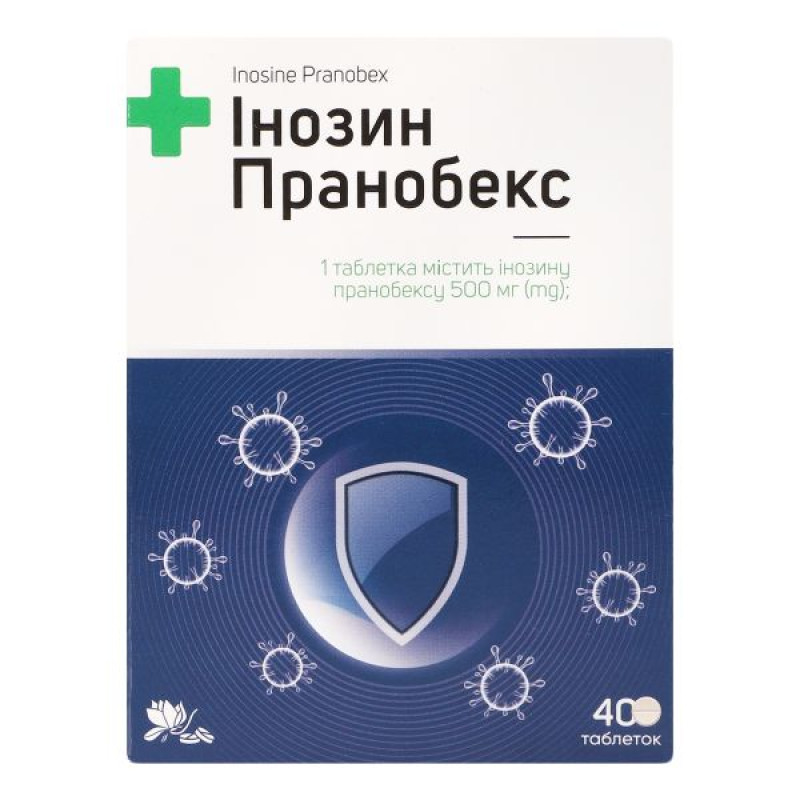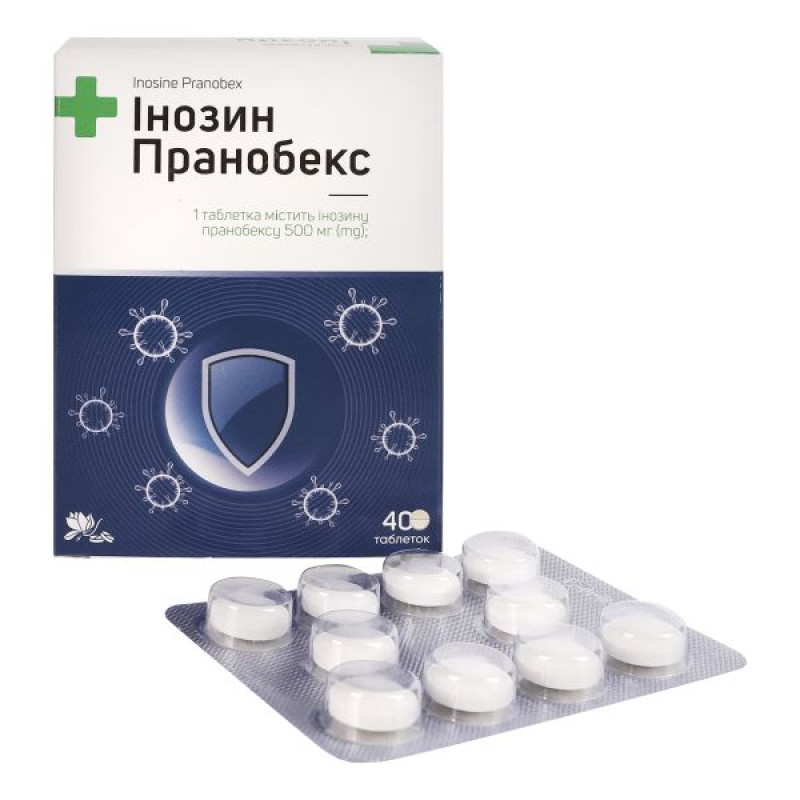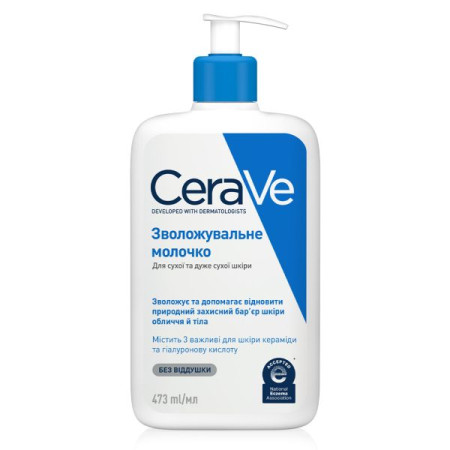Inosine pranobex tablets 500 mg No. 40

Instructions for use Inosine pranobex tablets 500 mg No. 40
Composition
active ingredient: inosine pranobex;
1 tablet contains inosine pranobex 500 mg;
excipients: corn starch, povidone K-25, magnesium stearate, mannitol (E 421).
Dosage form
Pills.
Main physicochemical properties: round tablets, from almost white to yellowish-white in color, with a biconvex surface, with a slight specific odor.
Pharmacotherapeutic group
Antimicrobials for systemic use. Antivirals for systemic use. Direct-acting antivirals.
ATX code J05A X05.
Pharmacological properties
Pharmacodynamics
INOSINE PRANOBEX is an antiviral agent with immunomodulatory properties. The drug eliminates the deficiency or dysfunction of cellular immunity, inducing the maturation and differentiation of T-lymphocytes and T1-helpers, potentiating the induction of a lymphoproliferative response in mitogenic or antigen-active cells. Inosine pranobex models the cytotoxicity of T-lymphocytes and natural killers, the function of T8-suppressors and T4-helpers, and also increases the amount of immunoglobulin G and surface markers of complement. Inosine pranobex increases the synthesis of interleukin-1 (IL-1) and the synthesis of interleukin-2 (IL-2), regulates the expression of IL-2 receptors. Inosine pranobex significantly increases the secretion of endogenous gamma-interferon and reduces the formation of interleukin-4 in the body. Inosine pranobex enhances the action of neutrophil granulocytes, chemotaxis and phagocytosis of monocytes and macrophages. Inosine pranobex inhibits virus synthesis by incorporating inosinorotic acid into the polyribosomes of virus-infected cells and inhibits the addition of adenylic acid to viral mRNA.
Pharmacokinetics.
After taking the drug orally at a dose of 1.5 g, the maximum concentration of inosine pranobex in the blood plasma is reached after 1 hour and is 600 μg/ml. In the body, inosine pranobex is metabolized in the liver with the formation of uric acid. The half-life of 4-(acetylamino)benzoate is 50 min, 1-(dimethylamino)-2-propanol - 3.5 hours. It is excreted by the kidneys in the form of metabolites.
Indication
INOSINE PRANOBEX is indicated for the treatment of decreased or dysfunctional cell-mediated immunity and clinical symptoms associated with the following diseases:
viral respiratory infections, primary and secondary, and immunosuppressive conditions;
infections caused by herpesviruses: herpes simplex virus types 1 and 2, varicella zoster virus; infections caused by cytomegalovirus and Epstein-Barr virus;
Genital warts (condyloma acuminatum) - external lesions (except perianal areas and areas inside the anal canal) - as monotherapy or as adjunctive therapy as part of local or surgical treatment;
papillomavirus infections of the skin and mucous membranes, vulva and vagina (subclinical) or cervix;
viral hepatitis;
severe or complicated measles;
subacute sclerosing panencephalitis.
Contraindication
Hypersensitivity to the active substance or to any of the excipients of the medicinal product, exacerbation of gout, hyperuricemia.
Interaction with other medicinal products and other types of interactions
Caution should be exercised when prescribing the drug with xanthine oxidase inhibitors (e.g. allopurinol) or agents that promote the excretion of uric acid, including diuretics, in particular thiazide diuretics (such as hydrochlorothiazide, chlorthalidone, indapamide) or loop diuretics (e.g. furosemide, torasemide, ethacrynic acid).
INOSINE PRANOBEX can be used after, but not simultaneously with, immunosuppressants, as there may be a pharmacokinetic effect on the desired therapeutic effects.
When used simultaneously with zidovudine (azidothymidine), the formation of azidothymidine nucleotide is increased by multiple mechanisms, including increased plasma bioavailability of azidothymidine and increased intracellular phosphorylation in human blood monocytes. This results in enhanced zidovudine action.
Application features
During treatment with inosine pranobex, a temporary increase in serum and urinary uric acid levels may occur, especially in men and the elderly, but usually these values remain within normal limits (up to 8 mg/dL or 0.420 mmol/L, respectively). The increase in uric acid levels is due to the catabolic metabolism of inosine in humans. This is not due to a fundamental change in enzyme function or renal clearance caused by the drug.
Therefore, the drug should be used with special caution in patients with gout, hyperuricemia, a history of urolithiasis, as well as in patients with impaired renal function. During treatment, it is necessary to monitor uric acid levels in these patients.
Some individuals may experience acute hypersensitivity reactions (angioedema, anaphylactic shock, urticaria). In such cases, inosine pranobex therapy should be discontinued.
In case of prolonged treatment, serum and/or urine uric acid levels, liver function, blood count and renal function should be regularly monitored in all patients.
Use during pregnancy or breastfeeding
Pregnancy. Studies on the risk of fetal abnormalities and impaired fertility in humans have not been conducted. INOSINE PRANOBEX should not be used during pregnancy unless the physician decides that the potential benefit outweighs the potential risk.
Breastfeeding. It is not known whether inosine pranobex passes into breast milk. A risk to the infant cannot be excluded. Breastfeeding should be discontinued during treatment.
Fertility: There are no data on the effect of the drug on fertility in humans. Animal studies have shown no effect on fertility.
Ability to influence reaction speed when driving vehicles or other mechanisms
INOSYN PRANOBEKS has no or negligible influence on the ability to drive or operate machinery.
Method of administration and doses
The drug is administered orally. The daily dose depends on body weight and severity of the disease, the dose is distributed evenly throughout the day. To facilitate swallowing, the tablet can be crushed and dissolved in a small amount of liquid when used.
Adults and elderly patients: the recommended dose is 50 mg/kg body weight (1 tablet per 10 kg), usually 3 g/day (6 tablets), maximum dose - 4 g/day (8 tablets); administered orally, divided evenly into 3-4 doses during the day.
Children over 1 year of age: the dose is 50 mg/kg of body weight per day (1 tablet per 10 kg of body weight for children weighing up to 20 kg; for children weighing more than 20 kg, prescribe the dose as for adults).
Duration of treatment
Acute diseases: for diseases with a short course, the course of treatment is from 5 to 14 days. After the symptoms of the disease have subsided, treatment should be continued for another 1–2 days or longer, depending on the doctor's decision.
Viral diseases with a long course: treatment should be continued for 1–2 weeks after the symptoms of the disease have subsided or longer, depending on the doctor's decision.
Recurrent diseases: at the initial stage of treatment, the same recommendations as for acute diseases apply. During maintenance therapy, the dose can be reduced to 500–1000 mg (1–2 tablets) per day. At the first signs of relapse, it is necessary to resume taking the daily dose recommended for acute diseases and continue use for 1–2 days after the disappearance of symptoms. The course of treatment can be repeated several times, if necessary, on the recommendation of the doctor depending on his assessment of the clinical condition.
Chronic diseases: the drug should be administered in a daily dose of 50 mg/kg of body weight according to the following regimens:
asymptomatic diseases: take for 30 days with a break of 60 days;
Diseases with moderately severe symptoms: take for 60 days with a break of 30 days;
Diseases with severe symptoms: use for 90 days with a break of 30 days.
This treatment can be repeated if necessary; the patient's condition should be monitored as in recurrent conditions.
Dosage for special indications
External genital warts (condyloma acuminatum) or papillomavirus infection of the cervical canal: take 2 tablets 3 times a day (3 g) as monotherapy or as an adjunct to local therapy or surgical treatment according to the following regimens:
low-risk patients (patients with normal immunity or patients with a low risk of relapse): during a period of 3 months, the drug is used for 14–28 days continuously, followed by a break in treatment for 2 months, continued until the affected areas decrease or disappear;
High-risk patients* (immunocompromised patients or those at high risk of relapse): for a period of 3 months, the drug is used 5 days a week for 2 consecutive weeks per month or 5 days a week every other week.
This treatment can be repeated several times if necessary.
Subacute sclerosing panencephalitis: daily dose is 100 mg/kg body weight, maximum dose is 3–4 g/day. Treatment is long-term, continuous, with regular assessment of the patient's condition and the need for continued treatment.
* High-risk factors for recurrence or cervical dysplasia in patients with genital papillomavirus infection, as with other similar diseases, include:
genital papillomavirus infection that lasts more than 2 years or has 3 or more recurrences in history;
immunodeficiency caused by:
recurrent or chronic infections;
sexually transmitted diseases;
anticancer chemotherapy;
chronic alcoholism;
poorly controlled diabetes;
atopy (hereditary predisposition to hypersensitivity);
long-term use of contraceptives (longer than 2 years);
folate level in erythrocytes ≤660 nmol/l;
having multiple sexual partners or changing your regular sexual partner;
frequent vaginal sexual intercourse (≥2–6 times per week);
anal sex;
the patient has a history of skin warts in childhood;
age >20 years;
chronic smoking.
Children.
The medicine is used in children aged 1 year and over.
Overdose
No cases of overdose have been observed. Serious adverse events, with the exception of increased serum uric acid levels, are unlikely based on the results of toxicity studies in animals. Treatment is symptomatic and supportive.
Adverse reactions
The only side effect that occurs most often during treatment with inosine pranobex in both adults and children is an increase in uric acid levels in the blood serum and urine (usually the level remains within normal limits), which mostly returns to baseline values a few days after the end of treatment.
Adverse reactions are classified according to frequency as follows: very common (≥1/10); common (≥1/100, <1/10); uncommon (≥1/1000, <1/100); frequency unknown (cannot be estimated from the available data).
On the part of the immune system:
Frequency unknown: Angioedema, hypersensitivity, urticaria, anaphylactic reaction.
From the psyche:
Uncommon: Nervousness.
From the nervous system:
Common: Headache, dizziness.
Uncommon: Drowsiness, insomnia.
Frequency unknown: Dizziness.
From the gastrointestinal tract:
Common: Vomiting, nausea, epigastric discomfort.
Uncommon: Diarrhea, constipation.
Frequency unknown: Upper abdominal pain.
Skin and subcutaneous tissue disorders:
Common: Rash, itching.
Frequency unknown: Erythema.
Musculoskeletal and connective tissue disorders:
Common: Arthralgia.
From the kidneys and urinary system:
Uncommon: Polyuria.
General violations:
Common: Fatigue, discomfort.
Laboratory studies:
Very common: Increased uric acid levels in the blood and urine.
Common: Increased blood urea, transaminases, alkaline phosphatase.
Expiration date
2 years.
Storage conditions
Store in original packaging at a temperature not exceeding 25 ° C. Keep out of the reach of children.
Packaging
10 tablets in a blister, 2 or 4 blisters in a pack.
Vacation category
According to the recipe.
Producer
LLC "SKP "Pharmaceutical Factory".
Location of the manufacturer and address of its place of business.
Ukraine, 12430, Zhytomyr region, Zhytomyr district, Stanyshivka village, Koroleva st., bldg. 4.
There are no reviews for this product.
There are no reviews for this product, be the first to leave your review.
No questions about this product, be the first and ask your question.











